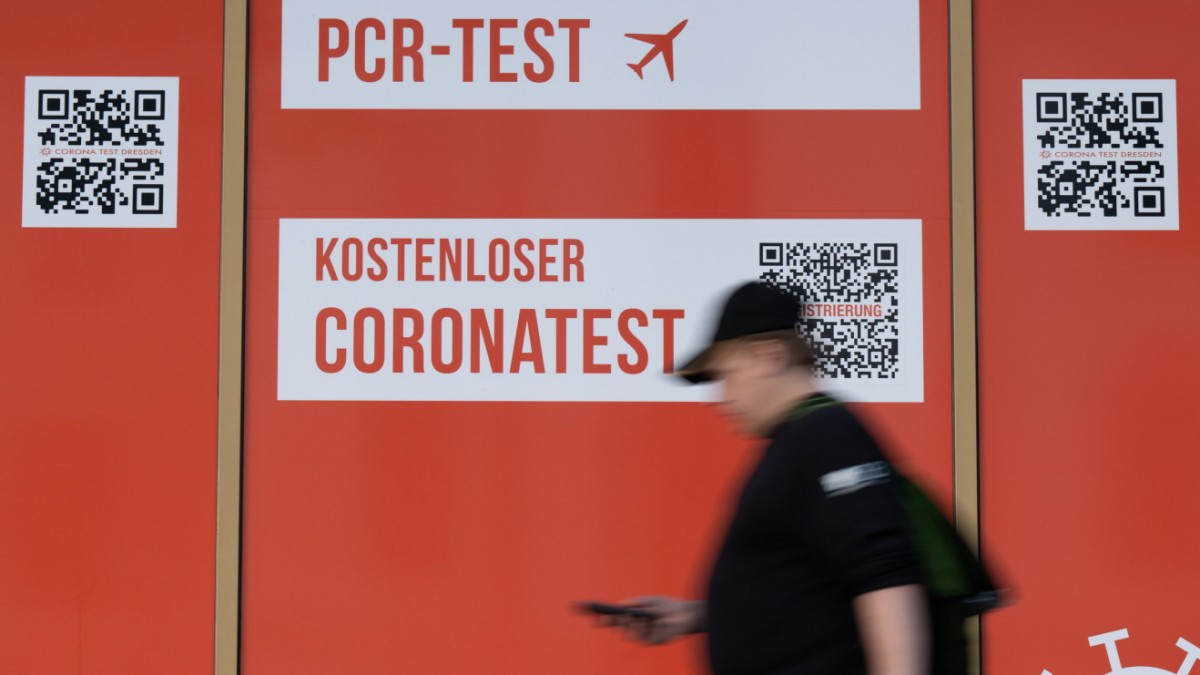The Robert Koch Institute (RKI) continues to publish the current seven-day incidence every day, even if this value is currently not very meaningful. On Friday it rose sharply – from 221 to 261 new infections per 100,000 inhabitants in the past seven days. However, since not all health authorities consistently transmit the current values, “daily fluctuations” should not be overestimated, advises the RKI. The weekly comparison is more meaningful.
And it now provides a new picture: the steady decline in the number of cases has stopped, at least for the time being. In the current week it is stagnating, as stated in the weekly report of the RKI, which it published on Thursday evening. In the past week (until May 29th), the nationwide seven-day incidence had fallen by 37 percent. However, it is not yet possible to say whether this is a real trend reversal after the number of infections has been falling since mid-March. Especially since the number of cases is likely to be significantly higher in reality, because many infected people probably do not have a PCR test done – and only the results are included in the statistics.
However, it is clear that the omicron subline BA.5 is also becoming increasingly widespread in Germany, which is currently causing the number of cases to increase rapidly in Portugal, for example. It recently accounted for around 5.2 percent of infections in Germany, as the RKI calculated on the basis of random samples – that is a doubling of the proportion within a week. In addition, the BA.4 variant has increased its share to 0.9 percent.
However, both values refer to the week before last, the RKI does not have any more up-to-date figures. The Munich laboratory Becker, which examined for subtypes and recognized the spread of new virus variants early on in the past two years, meanwhile, the two Omikron variants BA.4 and BA.5 have a share of a good 15 percent.
Experts assume that BA.5 is transmitted much faster and possibly also undermines the vaccination protection more easily than the previously circulating Omikron variants. Your fear: The expected decline in summer will not materialize, so the wave of infections in the fall will be all the greater.
This is the background against which politicians continue to debate how the corona protection measures will continue in the fall. Their legal basis expires on September 23. And Federal Minister of Health Karl Lauterbach (SPD) was again optimistic on Thursday evening on ZDF that there will be a law beyond this day “which will give us the preparations we need” – he is thinking, for example, of a mask requirement. “I think we’ll come to an agreement there,” says Lauterbach. He knows that the Greens are behind him as a coalition partner; but the other, the FDP, put up resistance.
In general, she wants as few corona regulations as possible. Just last week, several leading liberals insisted on first waiting for the federal government’s investigation of experts into how effective which measures had been. However, there are doubts that this commission will be able to deliver well-founded results by June 30, as scheduled. In addition, the Federal Government’s Corona Expert Council wants to present an opinion on autumn and winter in the coming week.
The prime ministers of the federal states now agree, at least with Chancellor Olaf Scholz (SPD), that they want to take early precautions for a more critical situation in autumn. They agreed that at a meeting on Thursday. Scholz then said that all options for action that were needed should be available – but there should no longer be comprehensive closures of schools and daycare centers. The state health ministers have long been calling on the federal government to revise the Infection Protection Act soon in order to be prepared. They have unanimously decided on a catalog of possible measures – such as a mask requirement indoors and 2G or 3G access rules. Similar demands also come from the municipalities.
–

